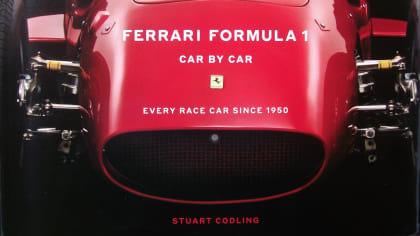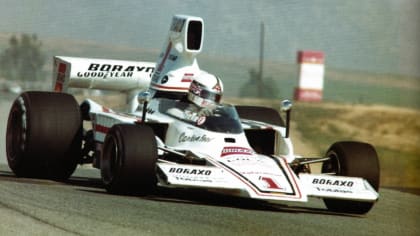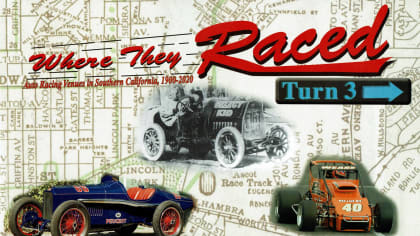Nissan Z – Part Deux

Updating and annotating the on-going saga of the Z-machine
Part two of our review - this time of the revised and updated version of Evanow’s book - coupled with some thoughts on the Z Proto and how it fits into the line-up.
By Hector Cademartori
Wed, Aug 25, 2021 12:35 PM PST
Book Review – Part Deux
Title: NISSAN Z - 50 Years of Exhilarating Performance (Updated Edition)
Author: Peter Evanow
The ISBN number is different but the price is the same: $45.
The first article of our "Nissan Z ExtravaganZa" - celebrating the 50th anniversary of the Datsun/Nissan Z models - was a review of this book. New readers who want to learn more about this project are invited to go back and read the full article and, just in case you’re a hard core Z-enthusiast and missed it, take a look at LACar’s whole Nissan Z ExtravaganZa production. We think you may like it. (… Suffice to say we expect that Cecil B DeMille would be proud of us.)

This is part two of our review, this time of the revised and updated version of Evanow’s book. The main change is in the last Chapter - chapter 10 of the new(er) book. As it happened, I’m pretty sure that the author and the publisher, Motorbooks-Quarto, really were both quite keen to release the book on the car’s anniversary on September 15th at the 2020 Z Convention at Nissan’s home base in Nashville. This happens to be when the information about the new Z Proto was unveiled to the world via Zoom from Japan... So, when photos became available the book was updated and reprinted.
Chapter 10 - in both editions - opens with a well-known photo of Mr. Katayama and his personal 240Z with the Nissan building in Carson, California in the background (where the company’s HQs were prior to their move to Nashville back in 2006). This iconic yellow Z now belongs to Mrs. Johnny Gable - "Mr. K"’s personal secretary for many years, who brings the car to almost every Datsun gathering to the delight of the Datsun/Nissan brotherhood that always appreciate her effort.
The title of chapter 10 - “The Future of Z-Ness” in the revised edition, and “Moving Forward and Beyond” in the first book - deals with the philosophy of the brand and what the Z model means for Nissan’s future as a company. This is explained by its design team and other members of the executive branch, without technical details of the Z Proto but with several photos of the prototype.

Nissan’s global design team, headed by Mr. Alfonso Albaisa, a Cuban-American (the company’s first non-Japanese chief of design), and Mr. Satoru Tai, Executive Design Director, brought the Z Proto to life along with Mr. Hiroshi Tamura, Chief Product Specialist. Mr. Tamura who, according to the author, was "arguably one of the main defenders and proponent of the Z within Nissan and externally" also wrote the foreword to this book.
In other words, the main difference between the first and the updated version of this chapter are photos of the Z Proto from various angles and from the interior. There are two new logos on the Z Proto: one is the corporate brand logo, a stylized, more “open” version of the circle with the word Nissan inside. The other one is "the new Z logo - a slash through the middle of a traditional Z-letter" as described in the book. I made a concerted effort to note any difference between this "new" logo and the original Datsun Z logo, but I wasn’t able to see it. They look identical, at least to me*.

The cover of the updated version of Nissan Z – 50 Years of Exhilarating Performance is subtly different from the first version. The logo on the hardcover is now the old "Z" instead of the 370Z’s. The dust-cover is similar but not identical - the new version also shows the old "Z" logo on the front (instead of the 370Z’s) with a tag at the top that reads "Includes New Z Proto Story". On the back of the dust-cover a side view of the Z prototype replaces the 370Z "50th Anniversary" photo.
Sidebar - Further Z-Thoughts
To my eye the Z Proto looks like a 240Z designed 50 years later… And that’s a good thing!
This review of the revised version of Pete Evanow’s informative book gives us the opportunity to expand a bit on the design of Nissan’s prototype along with other trends in the car industry. From a design standpoint, the Z Proto reminds me more of the original 240Z than the 350Z and 370Z successors which they tried to recreate. The 350 was an abstract and more conceptual modern interpretation of the 240, while the 370 looked more like a car with an aftermarket aero kit. Neither actually reminded me of a modern 240Z but, personally, I really liked the 350’s minimalistic treatment. The Z Proto, however, looks exactly like a 240Z designed 50 years later.

All the design components are there, only with a touch of modernism: the headlights’ nacelles and the bulge on the hood is shaped very much like the 240, including the creases that end in the badge. The front opening also looks similar to a 240’s without bumpers and the half-grille replicates the 240’s. The hatch’s angle comes down just like the 240 - the 350 and 370 didn’t - and the transition with the rear fenders also reminds of the 240Z’s. From the back, the car has the feeling of the original - sort of low-back with a "crisp" round look which, actually, looks more 300ZX than 240Z, or at least a combination of both. The detail of the round logo on the C-Pillar follows the original.

We included photos of a 1973 240Z without bumpers with this article to illustrate our description of the Z Proto and its similarities with the original design. Of course we’ve seen this type of evolution in other brands - especially in the retro fad of the 2000s. The first ones that come to mind are the VW New Beetle from the late ‘90s, and the new Mini a few years later in 2003.

The so-called American Pony Car also saw a revival of those sporty designs based on the originals. The Dodge Challenger and the Chevrolet Camaro are good examples of original shapes translated into modern designs, interpretations that kept some of the original lines, or at least their intention. The spirit of those unique cars - but not carbon copies. As a result, the viewer could identify that model - the soul of the design - even if the iterations are not perfectly identical.

The Ford pony car was, in fact, the first one that came up with the concept in 2015. But that new Mustang wasn’t really a modern interpretation, it was almost identical to the sixties fastback hot rod, arguably the closest to the original of the three designs as it was another Ford product, the Ford GT - first introduced in 2005 -, which was bigger in size but almost identical in shape to the legendary Ford GT-40 race car that dominated world class road racing in the ‘60s.
About The Author

Hector Cademartori honed his racing art in Buenos Aires. In 1983, he left his job with Corsa Magazine in Argentina and moved to Southern California to specialize in motor racing art. Today, you can find Hector’s art on Indianapolis 500 Yearbook covers, Laguna Seca Raceway, Auto Club Speedway and Carrera Panamericana posters, the NHRA, foreign and domestic automobile and motorcycle magazines, motorcycle manufacturers, Toyota Motorsports, TRD and Lucas Oil. Hector races his 1973 Datsun 240Z “Ferratsun” around the So Cal circuits, and a 1991 Volvo 740 Wagon with the 24 Hours of LeMons.






